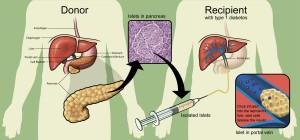Hurricane Katrina is considered as one of the most dangerous natural disasters and has been ranked as one of the five “deadliest hurricanes”. It first originated in Bahamas on August 23, 2005, when a tropical wave interacted with the Tropical Depression Ten. Later on it continued its way across and people on the Gulf Coast were warned by meteorologists that a “major storm was on its way”. Evacuations were taking place by August 28th. Although some were prepared for the hurricane to strike, they never expected the extent of the damages caused by the storm. When Katrina struck the Gulf Coast of the United States on early morning of August 29, it got Category three on the Saffir-Simpson Hurricane Scale. Furthermore, the winds moved at 100-140 miles per hour and stretched across 400 miles.

050902-N-5328N-228
New Orleans (Sept. 2, 2005) – Four days after Hurricane Katrina made landfall on the Gulf Coast, many parts of New Orleans remain flooded. The Navy’s involvement in the humanitarian assistance operations is led by the Federal Emergency Management Agency (FEMA), in conjunction with the Department of Defense. U.S. Navy photo by Gary Nichols (RELEASED)
New Orleans was at a higher risk because of the city being surrounded by water, and after the storm it caused more damage leading to flooding when the levees and drainage canals were affected. Once the water got into soil, swept away most levees, it caused 80% of the entire city to go under water. By the end, people had to struggle to reach the rooftops of the buildings for safety. The aftermath of Katrina was not easy to cope with. Even though people tried to help each other out with building boats, shelters, and food, the federal government was unprepared and did not have an effective plan of action to help. People were desperate for food and wanted to escape, but the officials only accepted about 15,000 refugees, and the poor were left with no help or escape route. Katrina also hit Louisiana, Mississippi, and Alabama, and the biggest damage happened to New Orleans. One reporter said that the aftermath of Katrina was a “total disaster zone” and people were “getting absolutely desperate”.

http://www.cnn.com/videos/tv/2015/08/25/katrina-storm-that-never-stopped.cnn/video/playlists/hurricane-katrina-10-years-later/
In the end, Hurricane Katrina killed about 2,000 people and affected about 90,000 square miles of the United States. Many were able to reach safety and had shelter and support. Until this day, after recovery and many years of rebuilding, people have been able to make a grand comeback and continue to live their normal lives while the re-building continues. Katrina took a lot away from many people, but they still fought back stronger and are living in better conditions than before.

Khashayar Noroozzadeh Rahimi







